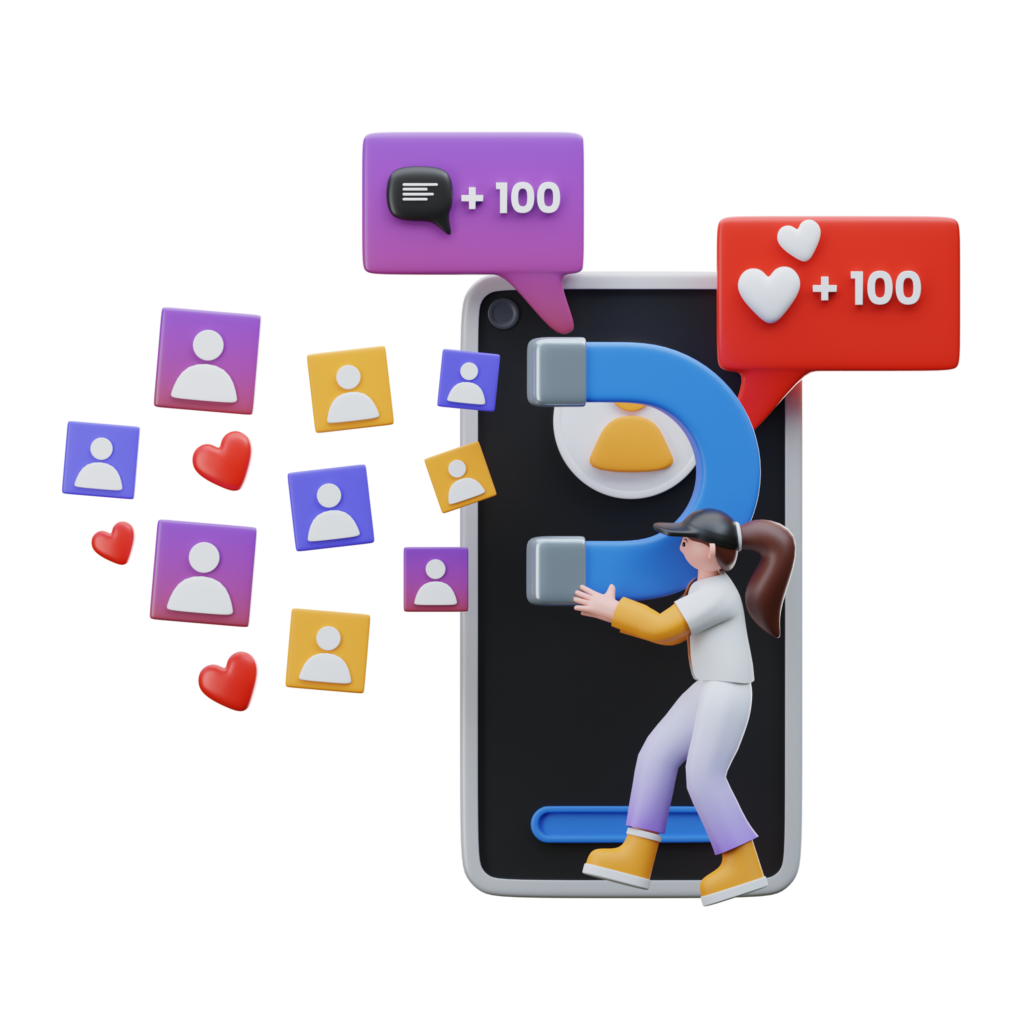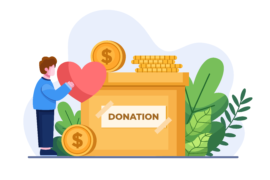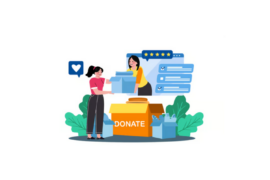While digital fundraising continues its rapid transformation, understanding the profound impact of recognizing donors through emerging platforms has become increasingly important. Beyond long-standing practices, modern tools, especially applications, now serve a pivotal function in communicating appreciation and cultivating devoted connections with patrons in novel ways. Sometimes through brief messages, other times via more elaborate tributes, technology has significantly elevated how benefactors feel valued throughout their journey with an organization. Going forward, strategically leveraging innovation to its fullest will surely strengthen the vital bonds of trust underlying any philanthropic partnership.
The Significance of Donor Recognition
In the realm of philanthropy, acknowledging benefactors extends far beyond a mere formality—it acts as a powerful catalyst, affecting the benefactor’s desire to contribute and shaping the overall culture of charitable giving. Understanding the psychological impact of recognition is vital in delicately balancing the expression of gratitude and encouragement of continued assistance.
When benefactors receive acknowledgment for their donations, regardless of size, it goes beyond a simple transactional exchange. It taps into humanity’s intrinsic need for validation and appreciation. Research has shown individuals who feel recognized for their generosity are more inclined to be motivated to give again. This psychological reinforcement establishes a virtuous cycle, where benefactors feel a sense of accomplishment and purpose, driving them to contribute more regularly.
Moreover, benefactor recognition plays a central role in cultivating a sense of community and loyalty within the donor base. In the digital age, where connections are frequently established virtually, the act of recognition becomes a tangible link that binds benefactors to the cause and to each other. Through acknowledgment, benefactors become part of a larger narrative, sharing a collective identity as contributors to a common mission. This sense of belonging not only enhances the benefactor’s connection to the organization but also fosters a supportive community where like-minded individuals come together to make a difference.
Traditional vs. Digital Donor Recognition
The transition from static to digital expressions of gratitude represents a paradigm shift for philanthropic organizations worldwide. Donor walls and written letters have long served as standard methods of appreciation. However, the proliferation of online platforms has introduced a new era of connectivity, interactivity, and customized donor engagement.
Where traditional approaches proved increasingly inadequate, digital recognition transcends such limitations. Physical structures are confined and detached from remote supporters seeking vibrant virtual engagement. In contrast, online acknowledgment dissolves geographical restrictions, allowing real-time connective worldwide.
Immediacy distinguishes digital methods. Protracted written communications sometimes delay felt appreciation diminishing impact. Conversely, platform personalized notifications, posts, and emails promote prompt felt value.
Additionally, personalized data insights augment customized connectivity. Inflexible static displays lack capacity to individualize or campaign-align expressions. Alternatively, analytics facilitate tailored messages, strengthening personal relevance and meaning for each supporter.

The Evolution of Donor Recognition Apps
The evolution of donor recognition in the digital sphere has been marked by innovative apps emerging that streamline the acknowledgement process and enhance the overall experience for donors. These programs represent a lively and interactive approach to expressing appreciation, bringing donor recognition into the 21st century in a dynamic manner.
One particularly notable example of a digitally successful donor recognition application is Werbylo. This platform goes beyond conventional acknowledgment by offering an intuitive interface customized to allow nonprofits to personalize and automate the recognition process. Werbylo enables real-time expressions of thanks, ensuring that contributors immediately receive feedback and gratitude for their donations.
Werbylo’s success lies in its seamless integration capabilities with diverse fundraising campaigns, social networking platforms, and organizational websites. The app facilitates not only monetary transactions but also a sense of community by permitting donors to engage with the cause and with one another through engaging features.
By highlighting prosperous digital donor recognition apps such as Werbylo, organizations can draw inspiration from real world cases that harness technological power to strengthen bonds with benefactors. As we explore the evolving landscape of donor recognition, these digital platforms emerge as potent instruments for nonprofits seeking to adapt and thrive in the digital era.
Features of Effective Digital Donor Recognition Apps
Effective digital donor recognition platforms are characterized by a diverse set of salient features that effectively convey gratitude while amplifying the overall benefactor experience. These attributes surpass conventional methods by leveraging emerging technologies to cultivate a personalized and engaging appreciation process.
Customization Alternatives:
Digital donor recognition platforms should offer adaptable customization options. This allows tailoring acknowledgement communications depending on the benefactor’s history, inclinations, and the actual campaign to which they contributed. The flexibility to craft personalized recognition encounters adds a bespoke touch, ensuring benefactors feel recognized and valued.
Real-time Appreciation:
One of the defining traits of impactful digital donor recognition platforms is providing real-time appreciation. Instant thank-you messages, updates, and notifications cultivate a sense of immediacy, strengthening the emotional bond involving the benefactor and the cause. This feature confirms that benefactors feel valued promptly after their contribution, maximizing the impact of the acknowledgement.
User-friendly Interfaces:
The success of any digital instrument is contingent on its usability, and donor recognition platforms are no exception. A seamless yet intuitive interface enhances the benefactor experience, facilitating easy navigation, contribution, and engagement with the appreciation process. User-friendly interfaces contribute to a positive interaction, motivating benefactors to continue supporting the organization.
Challenges and Solutions
Implementing digital donor recognition apps can pose difficulties for organizations, especially those transitioning from habitual acknowledgment methods. Proactively addressing these challenges is pivotal to maximizing the effectiveness of digital donor recognition.
Challenge: Aversion to Alteration:
Certain stakeholders within an organization may resist the shift from conventional donor recognition to digital methods. Resistance can stem from worries about technology adoption or a preference for familiar practices. However, some pioneers see opportunity in creativity and innovation.
Solution: Change Management Tactics:
To overcome resistance, organizations can execute change management strategies. This involves transparent correspondence about the advantages of digital donor recognition, furnishing training and backup for staff, and accentuating the positive impact on donor participation. Leading with empathy and understanding varied viewpoints can help unite diverse perspectives.
Challenge: Data Privacy Worries:
Digital donor recognition apps involve the aggregation and storage of donor data, raising issues about privacy and security. Transparency is important to alleviate concerns.
Solution: Robust Data Security Measures:
To address these concerns, organizations must prioritize robust data security measures. Implementing encryption, ensuring conformity with data protection regulations, and transparently communicating the steps taken to shield donor information can build trust and allay privacy concerns. Co-creating safeguards with stakeholders invests them in the solution.
Challenge: Integration with Existing Systems:
Integrating digital donor recognition apps with present fundraising and CRM systems can be a logistical challenge. However, such challenges are opportunities in disguise.
Solution: Seamless Integration and Interoperability:
Selecting apps that offer seamless integration with present systems and ensuring interoperability can streamline the implementation process. Organizations should assess the compatibility of digital donor recognition apps with their current infrastructure to minimize disruptions. With open-minded problem-solving, obstacles tend to dissolve.

Tips for Implementing Digital Donor Recognition Apps
Successfully implementing digital donor recognition apps requires careful planning and execution. Here are practical tips for nonprofits looking to incorporate these innovative tools into their fundraising strategies:
Define objectives clearly: precisely articulate the goals and intentions of incorporating digital donor recognition apps. Whether enhancing engagement of donors, increasing transparency, or broadening the reach of acknowledgment, having a well-defined purpose will guide the implementation process.
Engage various donor personas: customize your digital donor recognition strategy to align with the preferences and expectations of diverse donor profiles within your supporter base. Understanding demographics, communication habits, and motivations of contributors will help tailor acknowledgment messages for maximum impact.
Evaluate platforms judiciously: examine and opt for a digital donor recognition app harmonizing with your organization’s needs. Look for attributes like customization options, acknowledgements in real-time, and easy-to-use interfaces. Also consider platforms integrating effortlessly with existing systems.
Promote using multiple channels: actively promote adoption of digital donor recognition across communication channels like emails, social media, and your organization’s website to notify donors about fresh acknowledgment methods and motivate participation.
Instruct contributors transparently: ensure that donors comprehend how the digital donor recognition procedure works. Provide transparent instructions on how they can anticipate being recognized, whether through email notifications, in-app messages, or other avenues.
Educate personnel comprehensively: educate your team about fresh digital donor recognition processes. Training staff on utilizing the app and communicating changes proficiently will contribute to a smooth transition and consistent experience for donors.
Test before fully implementing: before entirely executing digital donor recognition, conduct pilot tests to identify potential issues and collect feedback. Use this input to optimize the acknowledgment process, ensuring a positive experience for both donors and staff.
Monitor using metrics: employ measurements to track performance of your digital donor recognition initiatives. Track involvement levels, donor satisfaction, and relevant benchmarks. Regularly evaluate impact of the acknowledgment strategy and make adjustments as needed.
Request donor viewpoints: actively solicit feedback from donors regarding their experience with digital acknowledgment. Use surveys or feedback forms to understand preferences, gather insights, and continuously better the recognition process.
Celebrate milestones meaningfully: leverage digital donor recognition to celebrate milestones, both for the organization and individual donors. Recognizing achievements, whether fundraising goals or significant contributions, cultivates a positive environment motivating continued support.
Conclusion
As nonprofits progressively embrace digital channels to strengthen bonds with supporters, Werbylo presents an opportune platform for optimizing online engagement. Their recognition tools customize expressions of gratitude to resonate with each donor’s sensibilities, forging a tailored philanthropic partnership. Witnessing contributions acknowledged in real-time delivers an immediate feeling of impact, cementing the relationship between missions and those who champion them.
Intuitive features maximize this connection. Personalized messages foster a sense of community amongst members as varied as the causes they support. Streamlined integrations preserve focus on core nonprofit functions while Werbylo handles acknowledgment logistics. Their growing clientele celebrates strengthened transparency, relationships scaled to ever more patrons, and missions propelled by coordinated efforts.
Ready to evolve beyond incremental strategy shifts? Werbylo elevates fundraising to its digital potential. Signing up exposes a world of customization opportunities, from tailoring tones to matching interfaces with existing systems. Join organizations uplifting causes through impactful recognition experiences. Transform acknowledgment processes into engines of engagement, letting Werbylo spearhead community-building so your efforts can concentrate on mission.




